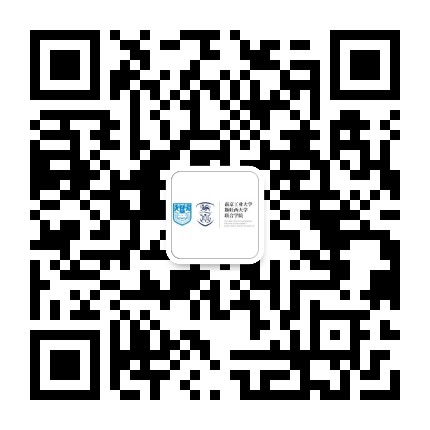姓名:Rhodri Williams
性别:男
职称/职务:授课教师---复杂流体和流动
电子邮箱: Professor Rhodri Williams - Swansea University
个人简介:
P Rhodri Williams教授,FInstP, FIChemE, FRSA, FLSW,在仪器仪表(特别是流变学)和血液流变学领域工作。他的工作得到了EPSRC,NERC,BBSRC,北约,皇家学会,皇家工程,国家卫生研究所(NIHR,NISCHR)和工业界的支持。在其研究领域发表论文130多篇。在EPSRC高级奖学金下进行的流变学研究(1990-1995;95-98)他因血液流变学的工作获得英国流变学会年度奖(1997年)和英国皇家学会布莱恩·默瑟奖(2007年)。2012年,他被授予英国皇家工程院企业奖学金,以促进凝血新诊断方法的开发和商业化。他于2005年获得ICI/阿克苏诺贝尔战略技术奖,他在医疗保健技术方面的工作使他获得国际IChemE行业创新与卓越奖(2008年),以表彰他在为移动患者开发新型血液氧合系统方面的工业合作工作,包括麻省理工学院、墨尔本、乔治亚理工学院、格勒诺布尔劳埃朗之万研究所和宾夕法尼亚大学。PRW已获得32项EPSRC资助(17项PI)和复杂流体平台资助(2004-2009)。他的工业合作包括由宝洁、埃克深美孚、雀巢、沃特斯公司、阿克苏诺贝尔和众多中小企业资助的研究。2005年,他领导在斯旺西NHS信托医院莫里斯顿建立了EPSRC-NHS临床血液流变学实验室(与PAE)。他于2009年被任命为EPSRC的技术机会小组成员,并与2011年被任命为EPSRC的战略咨询网络成员。他持有流变学和工艺技术领域的专利,并成立了3家衍生公司。他有公众参与(EPSRC PE战略咨询团队成员)和工程和物理科学的宣传经验,他的作品在伦敦科学博物馆(2005年,2013年)和史密森尼博物馆(华盛顿,2013年)展出。他管理大型多学科合作的经验包括310万英磅的EPSRC投资组合合作伙伴关系(作为首席研究员),两个相关的EPSRC大挑战奖(涉及斯旺西和伦敦大学学院)和平台赠款。PRW在斯旺西指导复杂流体处理中心和非牛顿流体力学研究所,并且是SU先进膜技术知识转移中心的主任。他最近成立的EPSRC大面积电子创新制造中心的成员(Co-I),该中心涉及剑桥大学、帝国大学和曼彻斯特大学的公司和学者之间的合作。
工作经历:
2017 – 至今 讲师,斯旺西大学
研究领域:
·非牛顿流体力学
·流变学
·血液流变学
·血流计
·过程工程
·空化
代表性成果:
1. Lawrence, M., Davies, G., Nyberg, M., Whitley, J., Evans, V., Williams, R., Hellsten, Y., Evans, P., & Evans, A. (2018). The effect of tyramine infusion and exercise on blood flow, coagulation and clot microstructure in healthy individuals. Thrombosis Research, 170, 32-37.
2. Hudson, R., Holder, A., Hawkins, K., Curtis, D., & Williams, R. (2017). An enhanced rheometer inertia correction procedure (ERIC) for the study of gelling systems using combined motor-transducer rheometers. Physics of Fluids, 29(12)
3. Davies, G., Lawrence, M., Pillai, S., Mills, G., Aubrey, R., Thomas, D., Williams, R., Morris, K., & Evans, A. (2018). The effect of sepsis and septic shock on the viscoelastic properties of clot quality and mass using rotational thromboelastometry: A prospective observational study. Journal of Critical Care, 44, 7-11.
4.Davies, N., Llwyd, O., Brugniaux, J., Davies, G., Marley, C., Hodson, D., Lawrence, M., D'Silva, L., Morris, R., Hawkins, K., Williams, R., Bailey, D., & Evans, A. (2016). Effects of exercise intensity on clot microstructure and mechanical properties in healthy individuals. Thrombosis Research, 143, 130-136.
5.Tabatabaei, S., Jahromi, H., Webster, M., Williams, P., Holder, A., Lewis, K., Davies, G., Griffin, L., Ebden, P., Askill, C., Williams, R., Webster, M., Tamaddon-Jahromi, H., & Davies, G. (2015). A CaBER computational–experimental rheological study on human sputum. Journal of Non-Newtonian Fluid Mechanics, 222, 272-287.
6.Davies, G., Mills, G., Lawrence, M., Battle, C., Morris, K., Hawkins, K., Williams, R., Davidson, S., Thomas, D., & Evans, A. (2014). The Role of Whole Blood Impedance Aggregometry and Its Utilisation in the Diagnosis and Prognosis of Patients with Systemic Inflammatory Response Syndrome and Sepsis in Acute Critical Illness. PLoS ONE, 9(9), e108589
7. Wilczynska, M., Lewis, K., Williams, P., Lawrence, M., Hawkins, K., Stanford, S., Evans, P., & Williams, R. (2013). P257 Sustained Aspirin effects on platelets function over 24 hours in patients with untreated Obstructive Sleep Apnoea Syndrome (OSAS). Thorax, 68(Suppl 3), A194-A194.
8. Davies, G., Stanford, S., Lawrence, M., Gill, D., Williams, R., Morris, K., Thomas, D., & Evans, A. (2012). Fractal analysis: a new biomarker for determining clot characteristics in critically ill patients. Critical Care, 16(S1), P430
9.Davies, G., Stanford, S., Lawrence, M., Gill, D., Williams, P., Morris, K., Thomas, D., Evans, P., & Williams, R. (2012). Fractal analysis: a new biomarker for determining clot characteristics in critically ill patients. In Critical Care (pp. P430
10.Sabra, A., Lawrence, M., Thomas, P., Morris, R., Aubrey, R., Davidson, S., Hawkins, K., Williams, P., Evans, P., & Williams, R. (2014). Validation of fractal dimension of the incipient blood clot in ST-segment-elevation myocardial infarction. The Lancet, 383, S91

